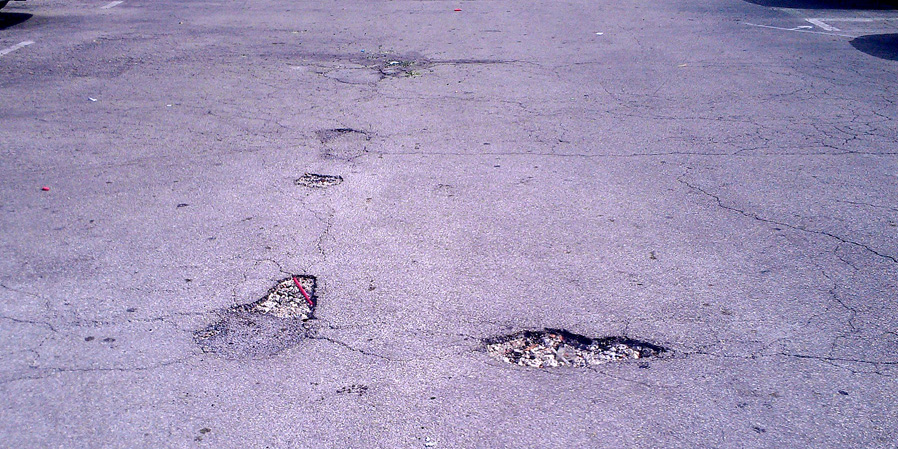It may not be your fault but it is your asphalt. And from time to time potholes and other distresses will need attention. Root intrusion from adjacent planters and pavement lifted by hydrostatic water pressures can also create safety issues for pedestrians. Early detection of problems in your pavement surfaces can prevent further asphalt erosion and help you extend the life of your pavement surface.

Pavement repairs are area specific corrective measures.. The patching process most often involves removal of the material in and around where a failure is detected and replaces the material with new asphalt. In South Florida the typical patching process includes the following steps;
- Outline the area to be repaired with marking paint so the customers and the crews understand the extent of each repair.
- Cut the pavement along the outlined area with a pavement saw.
- Excavate and/or mill and remove as much surface material and base as necessary to provide firm support for the new asphalt material.
- In root damaged areas the exposed surface roots should be cut and removed. Then the disturbed base material would be graded and re-compacted.
- Apply a tack coat to the vertical edges and base of the prepared area.
- Fill the excavated area with enough asphalt mixture to ensure the patch is level with the pavement surface after compaction.
- Spread and grade the material then compact with a steel drum roller or a vibratory plate compactor for smaller or difficult to reach areas. For thicker repairs the new asphalt needs to be installed and compacted in multiple lifts (layers).
- Check and the edges and clean up any excess material and debris.